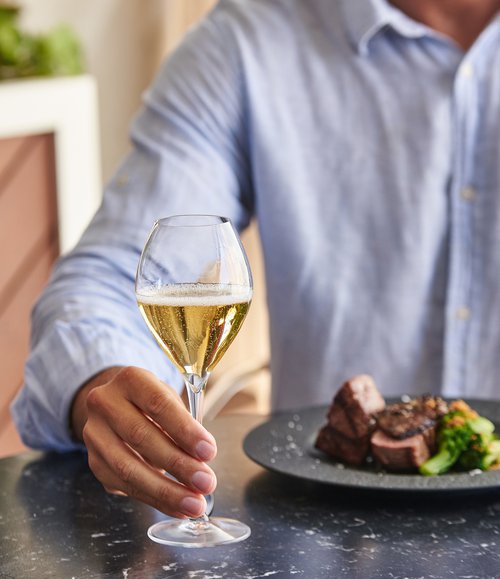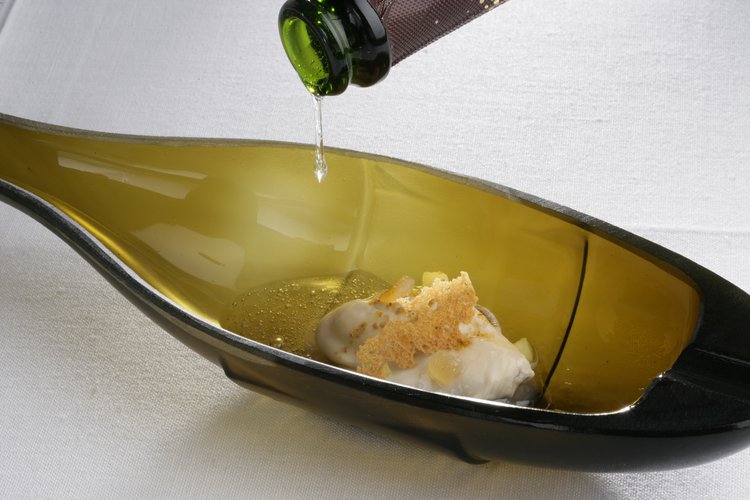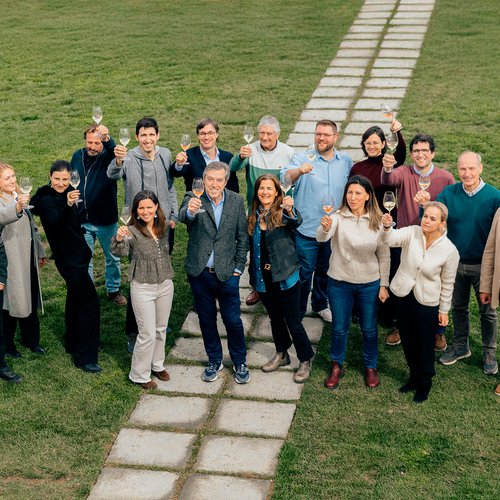How cava became the darling of the Spanish food world
It takes a cold, hard heart not to get a tingle down your spine at the sound of a popping cork. It is the thrill of expectation, a sound that brings people together in a celebration of life in all its messy glory, as at home over a humble Catalan breakfast of pa amb tomàquet (bread rubbed with ripe tomatoes and drizzled with olive oil), as it is with a three-star, multi-course tasting menu.
Many years ago, just before sitting down to my first, ever menu degustación at the late, great El Bulli, I interviewed Ferran Adrià. At the end, I asked him what he thought I should drink with it. “Cava,” he said, without missing a beat, “it enhances the taste of everything.” I’ve never forgotten this piece of advice, and it’s served me well ever since.
Back in the 1970s, Spain began its transformation from the land of comida casera (home-cooking) to the gastronomic heavyweight it is today, with, according to Turespaña - the national body responsible for marketing Spain as a tourist destination and gathering statistics - around 7.5 million people visiting per year just for the food. By 2019, seven of its restaurants featured on the Worlds 50 Best list, it has innumerable Michelin stars, a rich tradition of regional cooking featuring pristine local products, and a blend of traditional and maverick chefs who are not afraid to dance to the beat of their own drum.

Still wines would surely follow, but it was not until 2017, that the DO Cava established a new category named Cava de Paraje Calificado (CPC), in order to shine a light on their own star products - think of it as the grand cru of the cava world. Among various factors that have to be met, most crucially the grapes must come from a single vineyard and the cava must be aged for at least 36 months. “This initiative is growing stronger and stronger,” says Dani Lasa, founder chef at Madrid’s esteemed Pedegrú and former head of creativity and research at Mugaritz. “They are producing some wonderful, dreamy drinks.” Cava may have taken its time to get the recognition it deserves, but now, it seems is its moment.
“Cava’s image suffered because of the perception it was cheap fizz,” explains Ferran Centelles, master sommelier, drinks manager at the El Bulli Foundation and Spain correspondent for Jancis Robinson. “But it has always been a really good product: very well made, tasty and fresh. Over the last few years, longer aged cavas have become more complex and these are really worth drinking. In terms of quality and taste, I have no doubt that cava is equal to champagne, but in context it doesn’t yet have the glamour. What’s is exciting, is these top-end cavas have extraordinary potential.”
it has always been a really good product: very well made, tasty and fresh
He is not alone in this belief. Speak to just about any chef in Spain, whether at fine dining level or at a market stall in the Boqueria, and they’ll tell you the same thing. While it’s an obvious choice as an aperitif - crisp, lively, refreshing – it’s capable of so much more. “It is a drink with unique sensory characteristics,” says Lasa. “As a cook, the aroma and taste in food is very important obviously, but texture is often undervalued and yet it is essential in terms of rounding off the overall attributes of the dish. This is no less important in a drink. The body of a glass of cava uniquely supports the aromatic complexity of the grapes, and the fineness of thousands of bubbles in the glass plays an essential role in making the magic happen in the mouth.”
What many people don’t realise, even today, is that cava is made to exactly the same ‘méthode traditionnelle’ as champagne, meaning it is fermented in the bottle, which gives it its refined fizz and allows it to age with great success (prosecco is fermented in the tank which results in a lighter, frothier bubble and fruitier wine designed to drink early).
Where cava distinguishes itself from champagne is the grapes, using a classically Catalan trio that are lighter in acidity: Macabeo (also known as Viura in Rioja, with light floral nuances), Parellada (which brings a fine acidity to the wine) and Xarel.lo (also known as Pansa Blanca, which is earthy and expressive). While typical champagne grapes like Chardonnay and Pinot Noir may also be used, connoisseurs are increasingly looking to the big three for an authentic expression of the terroir - cava can be made anywhere in Spain, but more than 95% of it is produced in the Penedès region of Catalunya.
“Our wine list is 100% national,” “says Jordi Artal, owner-chef at one-Michelin starred, Cinc Sentits (cincsentis.com) in Barcelona. “If a client wants a glass of celebratory bubbles, cava, is what they get. Many countries produce sparkling wine, but I feel a connection to this land when I drink cava, even if I’m far away. For me it is happiness and celebration in a glass.”
As the industry evolves, so increasing numbers of chefs and sommeliers are celebrating its versatility.
What is extraordinary is that within the same D.O. you have different soils, climates, varieties and geographical areas, so the diversity of cava is immense

El Celler de Can Roca, has been voted best restaurant in the world twice (in 2013 and again in 2015). Known for his exquisite food and wine pairings, he credits the possibility of pairing cava with just about anything because of its freshness, acidity, flavour and gustatory intensity. “I love the foie nougat, hazelnut praline and truffle that we accompany with the Mas Via 2000 from Cavas Mestres,” he says, “But if you’re talking traditional, you can’t beat grilled sardines with a cava brut nature gran reserva.”
Now, all over Spain, chefs and sommeliers are celebrating their heritage as the true gift it is. At Sobretablas in Seville, rising stars, Camila Ferraro who was voted best new chef 2020 at Madrid Fusion, and Robert Tetas, a hugely talented sommelier, frequently turn to cava when their guests are in doubt as to whether to drink white, or red with a meal. “Cava is nearly always the solution,” says Ferraro, while Tetas explains. “We particularly like the older wines - gran reservas - that have aromas of sourdough or pastry, but still maintain their freshness.”
Everyone I spoke to agreed that pairing cava with seafood, from freshly shucked oysters, to sticky grilled navajas, to sumptuous rice dishes, as well as spices, cheeses and mushrooms, works a treat. Rosé and aged cavas meanwhile come highly recommended with more complex dishes, cured and grilled meats and even hearty, stews. Catalan’s of course, have long known this, now the rest of the world just has to catch up.

For me though, the true beauty of cava is perhaps in its democracy. While there’s nothing better than treating yourself to a top-end reserva or gran reserva, a bottle of quality crianza – most typically a brut nature meaning no top-off dosage is added, keeping it bone-dry with a pleasing, palette-cleansing acidity – can be had for around €10, and indeed much less, which here in Catalunya is deemed an appropriate pick-me-up at any time of the day or night.
In these strange and unsettling covid-days, it’s good to know that in the world of cava, every moment, big or small, no matter your budget, is still worth celebrating.






